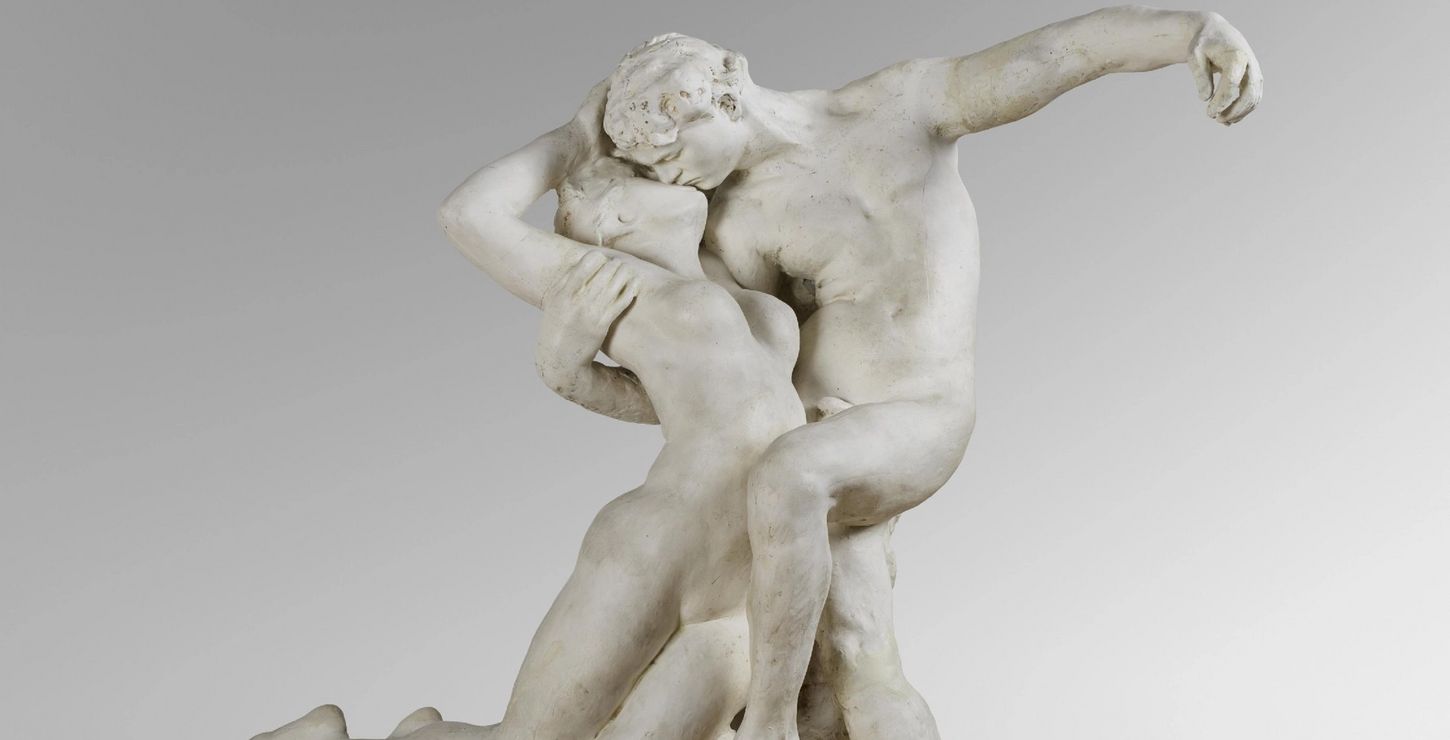Main Building
A Philadelphia landmark and one of the world's most important collections of nineteenth-century sculpture, the Rodin Museum opened its doors to the public on November 29, 1929. On the occasion of the 75th Anniversary of this celebrated showcase of works by the great French sculptor Auguste Rodin (1840–1917), the museum will present a series of special events, programs, and a new installation featuring provocative pairings of Rodin's sculptures, including the plaster and bronze versions of Rodin's most lyrical work on the theme of human love, Eternal Springtime (1884).
"We are delighted to celebrate the 75th Anniversary of the Rodin Museum, home to the spectacular collection amassed by a native Philadelphian which continues to captivate generations of visitors from throughout the world," said Anne d'Harnoncourt, Director of the Philadelphia Museum of Art, which has cared for and administered the Rodin Museum since 1939. "The Rodin Museum is, more than ever, one of the city's great cultural attractions and a key element of our growing campus along the Benjamin Franklin Parkway."
Beginning in the fall of 2004, the Rodin Museum's 75th Anniversary celebration will feature a lively series of public programs, including family and childrens activities, lectures, school programs, and concert performances, as well as a 75th Anniversary Gala planned for Thursday, October 14. A French-language audio guide and a new children's guide to the museum will also debut during the anniversary year.
The special installation will illuminate the artist's working process and how he developed his themes. A central focus of the installation is Danaid (1902), one of Rodin's most admired marbles, which was acquired by the Philadelphia Museum of Art in 2003. Among the artist's most touching evocations of despair, Danaid represents the arched form of a young woman fallen to her knees over a broken vessel from which water flows gently, commingling with her hair. The sculpture was given to the Pennsylvania Academy of the Fine Arts in 1902 by the Philadelphia artist Alexander Harrison (1853–1930), who acquired Danaid directly from Rodin through an exchange of his own marine pictures. The American artist wrote to Rodin that Danaid would be a "patriotic artistic gift to the city of Philadelphia."
Danaid will be shown with a number of related sculptures of the female form. The wonderful marble Aurora and Tithonus (1906) will be an anniversary loan from the Musée Rodin in Paris. In Philadelphia, it will be united with another of Rodin's depictions of a female figure mourning over the lifeless body of her beloved, the plaster Death of Adonis (1888). The marble Andromeda (1885) depicts the despairing beauty of Greek mythology at a point in her tale just after her father, King Cepheus, chained her to a rock, sacrificing her to a sea monster to save his people. The plaster Sorrow (c. 1887) is closely related in feeling to Andromeda, each showing female figures so overcome with grief that they fling themselves forward and fold their arms around their heads. Also paired in the installation are Adam (1880) and The Shade (1880, enlarged c. 1902), two towering bronze figures that reveal the impact Michelangelo had on Rodin's art; as well as The Cathedral (1908) and The Hand of God (1898), two of Rodin's larger studies of hands. Other pairings will be made with sculptures from the Rodin Museum collection, the John G. Johnson Collection at the Philadelphia Museum of Art, and loans from public and private collections.
